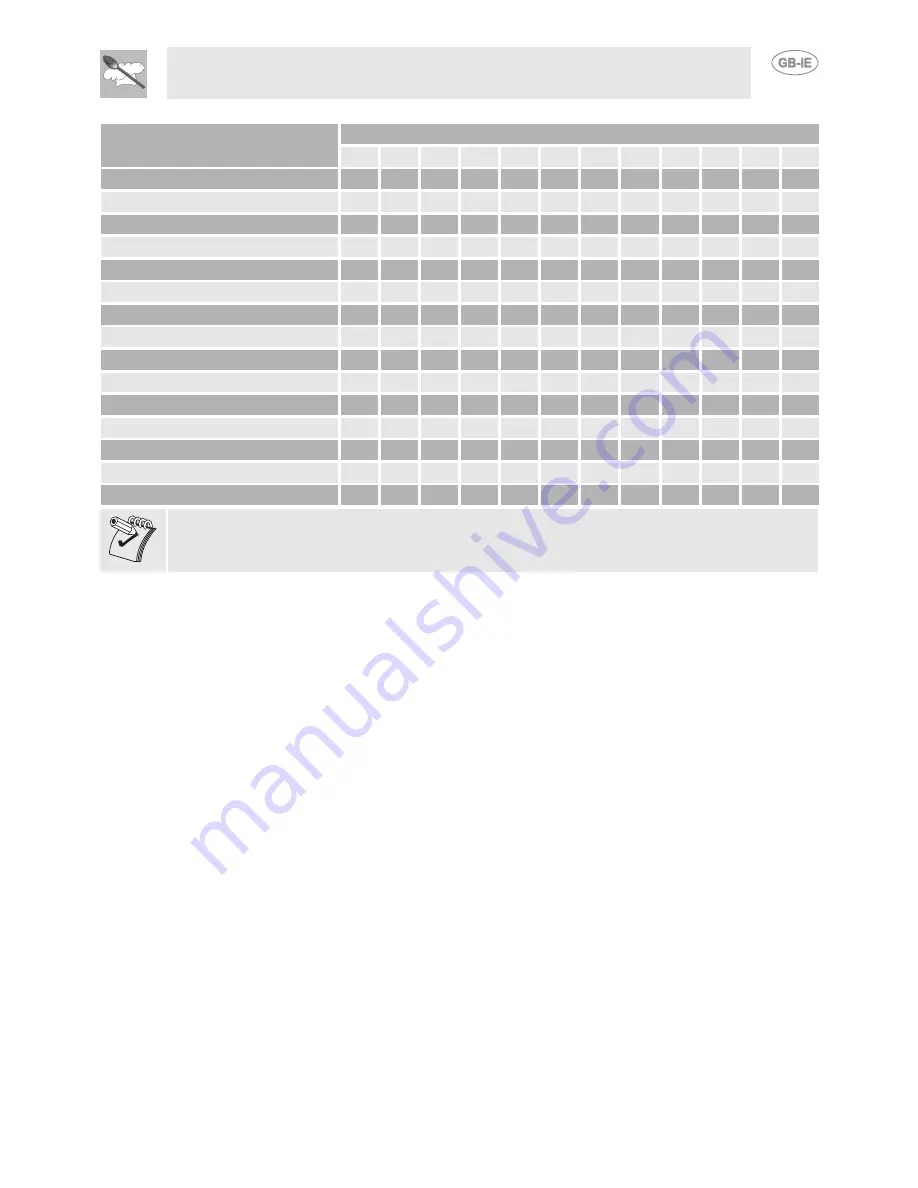
Instructions for the user
45
FOOD
STORAGE PERIOD (IN MONTHS)
1
2
3
4
5
6
7
8
9
10
11
12
Vegetables
+
+
+
Fruit
+
+
+
Bread and confectionery
+
Milk
+
Ready meals
+
Meat: beef
+
+
+
veal
+
+
+
pork
+
+
+
poultry
+
+
+
game
+
+
+
ground meats
+
Smoked sausage
+
Fish: oily
+
non-oily
+
Chitterlings
+
Attention
To avoid any alterations in the quality of frozen foods, do not exceed the permitted storage
period, which varies depending on the type of food.
9.2 Defrosting deep-frozen foods
You are advised to consume partially defrosted foods as soon as possible. Low temperatures preserve
the foods but do not destroy the microorganisms which become active after defrosting, potentially
leading to a deterioration in the products. If the smell and appearance of defrosted foods appears to be
unchanged, they can be cooked and potentially refrozen after they have cooled.
To defrost frozen foods correctly, depending on the type of food and the intended use, they can be
defrosted at room temperature, in the fridge, in an electric oven (static or fan-assisted oven function) or
in a microwave oven using the appropriate function.
9.3 Making ice cubes
Fill the tray provided 3/4 full with cold drinking water or any other liquid that you wish to freeze. Put it in
the top drawer of the freezer, checking that the base is dry to ensure that it does not stick to the drawer.
If the tray gets stuck to the bottom of the drawer, do not use pointed or sharp objects to remove it. To
remove the ice cubes, leave them at room temperature for 5 minutes, then twist the tray slightly or put it
under running water for a few seconds.








































